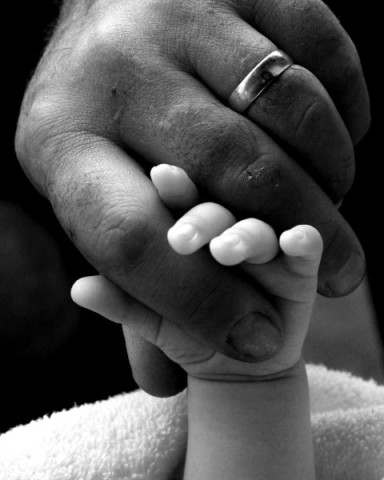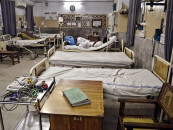Children’s rights: Stricter laws needed against child marriage
Miscreants storm into seminar room, insist child marriage is ‘part of culture’.

A day-long SPARC seminar was held in Sialkot where the key speakers addressed the issue of child marriages and demanded stricter legislation on the matter.
The seminar was interrupted by a large group of miscreants from the area who protested outside the venue and the SPARC speakers and clerics exchanged hot words on the issue before guards and police officials asked the clerics to leave the venue.
“We were suddenly ambushed by seven men who began to yell that we were promoting ‘western values’ and that we were attacking ‘local culture’ in the name of human rights,” said a SPARC volunteer at the event Amina Khawar.
Others at the seminar said that even some of the attendants had protested against the call for amendments in legislation regarding child marriage. “It is disappointing when one realizes that people are not willing to take a stand against such wrongs themselves and target those that do but that wont stop us,” said a speaker at the event Haider Kaleem.
The speakers at the event demanded that a single definition for male and female children be recognised to bring the Child Marriage legislation in conformity with the provisions of the Constitution of Islamic Republic of Pakistan 1973 and the United Nations Convention on the Rights of the Child, 1989.
The key speakers were of the view that poverty, illiteracy, social and cultural practices were major factors citied for the prevalence of child marriages.
“An early marriage leads to early conception, which ultimately affects the health of the teenage girl as well as her future,” said a social worker Naila Athar, adding “These girls seldom get an education and they are bound for life from a very early age without any choice of their own.”
While delivering his speech, SPARC Child Rights Committee Sialkot coordinator Muhammad Arslan Khan stated that Article 16 of the Universal Declaration of Human Rights states that:
(1) Men and women of full age, without any limitation due to race, nationality or religion, have the right to marry and to found a family. They are entitled to equal rights as to marriage, during marriage and at its dissolution.
(2) Marriage shall be entered into only with the free and full consent of the intending spouses.
Khan disclosed that SPARC had launched a two-week long campaign in Sialkot for raising awareness regarding the issue of under-age.
“We hope that the government takes this issue up and that we have their support in curbing this menace,” Khan said.
The right to choose
Enourmous pressure to bear children is put on child brides. In developing countries; the leading cause of death for young girls between the ages of 12 and 18 is early pregnancy. A child according to the UN Convention on the Rights of the Child is any person under the age of 18. Unfortunately the practice of child marriages is common in all parts of Pakistan particularly in the poor urban areas.
Published in The Express Tribune, December 20th, 2010.



















COMMENTS
Comments are moderated and generally will be posted if they are on-topic and not abusive.
For more information, please see our Comments FAQ